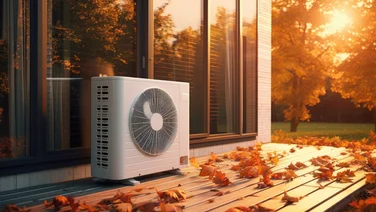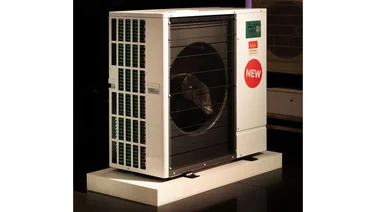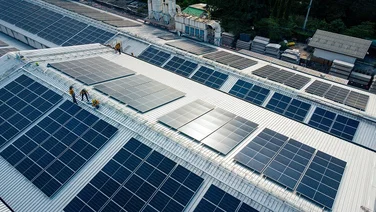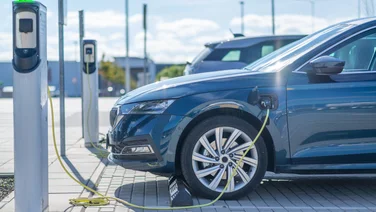- Reducing your energy consumption at home is one of the cheapest and most effective ways to reduce your energy costs.
- There are two main ways to achieve this: smaller DIY – low impact – and substantial building upgrades – high impact.
- There are also other things you can change about how you use appliances in your home that can save some extra cash.

Stock image of a cozy cottage – credit: pxhere
If you want to save money on your heating and hot water bills, you could install solar panels or replace your boiler with an air pump. However, these are often expensive measures that require significant building work to install.
However, there are cheaper and easier ways to help reduce your energy use at home. Most of these will not require you to spend a lot of cash and can make a decent dent in your bills.
If we’ve piqued your interest, read on to find out more.
How can I save energy in my home?
If you are serious about slashing your energy costs at home, there are quite a few thinIf you are serious about slashing your energy costs at home, there are a few things you can do, with little to no cost, that can have a not-insignificant impact on your bills. These include:
- Replacing older tungsten bulbs with compact fluorescent lightbulbs (CFLs) or LEDs
- Unplugging electronic devices when you’re not using them
- Keeping your thermostat at as low a setting as possible (most people can comfortably turn it down to between 18°C and 21°C)
- Try to reduce the amount of water you waste from washing, taking showers/baths, etc.
- Use the washing machine and dishwasher at low temperatures
- Where possible, try to cook with the lid on pans
These are great ways to reduce energy use but if you want to reduce your bills more significantly, you may need to consider more impactful measures. Solar panels, heat pumps, insulation, skylights and EVs are all great ways to cut energy.
1. Install double-glazed windows
According to most estimates, you lose around 18% of your home’s heat through your windows. For this reason, it is good practice to make sure you have the most energy-efficient windows you can afford.
This is especially the case if you have original single-glazed or older, worn-out double-glazing units installed. With the latter, you can tell if you should call time on them if they suffer from draughts and leaks, or suffer from condensation between the panes of glass on cold days.
In either case, you should consider replacing them ASAP. This isn’t cheap, with an average three-bedroom house costing around £15,000 for a full install. But if you do, you can expect to benefit from energy savings of around £150 a year for AA++-rated double-glazed windows.
Check out our dedicated double-glazing guide to find out more.
2. Install draught-proofing

Stock image of a draught excluder – credit: Clare Eggleton/Flickr
One of the simplest and most effective ways to save energy on heating is to make your home as draught-proof as possible.
The reasons why are very straightforward. Whether you have a traditional boiler and radiator system or a more sophisticated heating system, these systems effectively work by heating the air inside your home.
That is costly, so you want to avoid diluting it with cold air or letting the warm air leak outside. Draughts are commonly found at windows, doors, open chimneys, old floorboards and worn-out extractor fans, so be sure to check these areas.
Depending on the nature of the draught (window, roof hatch, cracks, etc), there are many products out there that can be fitted with little to no DIY experience.
However, don’t overdo it. Most homes in Britain benefit from a certain amount of ventilation to freshen the air and control things such as condensation and mould (especially in bathrooms and kitchens). But the aim here is to have controlled ventilation.
Draught-proofing around windows and doors can save approximately £35 a year in Great Britain (GB) and £50 in Northern Ireland (NI). If you have an open chimney, draught-proofing it when you’re not using it could save you around £50 a year in GB and £70 in NI.
Draught-free homes are more comfortable at lower temperatures. This means you can turn down your thermostat, saving even more on your energy bills.
It shouldn’t cost more than around £250 for an average-sized home to get a tradesman in to draught-proof your home.

Insulating your home is a great way to cut bills – credit: Damian Fogg/Flickr
3. Insulate your home
Insulating your home is by far one of the best ways to slash bills by reducing your need to burn fuel (and money) heating the air inside your home.
Much like draught-proofing, but on steroids, home insulation effectively stops heat from leaking through your walls, floors, ceilings, and roofs. Technically, it would also include windows and doors, but that is somewhat different, so we’ll cover that in another section.
Which type of insulation should I choose?
Insulating your home is by far one of the best ways to slash bills as it reduces your need to burn fuel (and money) heating the air inside your home.
Much like draught-proofing, but on steroids, home insulation effectively stops heat from leaking through your walls, floors, ceilings and roofs. Technically, it would also include windows and doors, but that is somewhat different, so we’ll cover that in another section.
- Which type of insulation should I choose?
There are various ways to do this but your home’s age, build and budget will dictate what you do.
Here are some of the types of insulation available:
- Cavity wall insulation
If your house was built after the 1920s, it likely has a cavity external wall. Earlier ones had narrow cavities, so they may not be appropriate for cavity wall insulation, but most others are.
This method effectively replaces the air gap between the twin leaves of your external wall with an insulating material such as polystyrene balls, mineral wool or foam. These reduce heat loss through the walls, helping to keep the house warmer in winter and cooler in summer.
Cavity wall insulation is a cost-effective and efficient method to enhance a home’s energy efficiency, making it a popular option for homeowners wanting to upgrade their property’s insulation.
- External wall insulation
Another form of insulation for older solid-walled or cavity-walled properties is bolted insulation. As the name suggests, this effectively bolts insulation to the outside walls of your home.
As with cavity insulation, installing this will dramatically reduce the heat loss from heat-conducting through your walls. However, not all properties are suitable to have it.
Listed buildings, buildings with structural issues and homes with small roof overhangs or other structural protrusions are prime examples. In the latter case, the increase in wall thickness may lead to add-on costs such as extending the roof’s eaves.
It is, however, one of the most expensive measures and should only be considered with expert advice.
- Spray foam insulation
Another form of home insulation you may want to consider is spray foam. Ideal for roof spaces and floors, this method can also be used on walls.
Spray foam insulation is a liquid foam that is sprayed into position and then sets to form an insulating layer. It can be used to insulate your roof, loft, walls, floors and more.
It is incredibly versatile but should only be considered with expert advice. Once set, it is difficult to remove, creates harmful fumes and can impact home ventilation.
This form of insulation is also not the prettiest and should only be installed in out-of-sight areas such as attics or under floors.
- Pipe insulation
Pipe insulation effectively reduces energy bills by preventing heat loss from hot water pipes and minimising heat gain in cold water pipes. By giving exposed pipes a jacket of insulation, hot water remains at a higher temperature as it travels through the system, and this will reduce the need for reheating, ensuring less energy is wasted.
As a bonus, pipe insulation also helps prevent pipes from freezing during colder months, reducing the risk of burst pipes and costly repairs.
If you feel confident, you can insulate most pipes with off-the-shelf pipe insulation pieces; get a professional in if you’re not confident doing the job yourself.
- Floor insulation
Floor insulation is another strategy to reduce energy bills by preventing heat loss through the ground floor (or other floors exposed to the outside air) of your home. Insulating floors creates a barrier that helps retain heat within the living spaces (lounge, bedrooms, etc), making your heating system more efficient.
Not only does this reduce your fuel bills, it will also reduce draughts and add some bonus soundproofing.

Solar panels are a great way to reduce your energy bills – credit: Michael Coghlan/Flickr
4. Install solar panels
If you really want to reduce your home energy bills, you may want to consider ‘going nuclear’ by installing renewable technologies such as solar panels.
Solar panels offer an excellent way to lower energy bills by capturing renewable energy from the sun. Installing solar panels on your roof allows you to produce your own electricity, reducing your dependence on the grid and lowering your monthly energy expenses.
Any excess energy produced can often be sold back to the grid, providing an additional financial benefit. Additionally, solar panels contribute to environmental sustainability by reducing your carbon footprint.
They offer a renewable and clean energy source that reduces greenhouse gas emissions and lessens dependence on fossil fuels.
If you want to know more about this topic, read our in-depth guide.

Heat pumps are another way to reduce your heating bills – credit: yum9me/Flickr
5. Install a heat pump
Heat pumps are another great way to cut your energy bills. They are highly efficient (usually in excess of 100s of percent) and can provide both heating and cooling.
Unlike boilers, they use electricity as a “fuel” and work by extracting heat from the air, ground or water (depending on the type). This heat is then transferred into your home during the winter. In the summer, they reverse the process to cool your home.
- Which heat pump should I choose?
The type of heat pump you choose depends largely on your house’s characteristics and location. Each type of heat pump operates on the same basic principle of transferring heat from one place to another but differs in its heat source.
Air-source heat pumps (ASHP) use the air outside your home to heat a refrigerant liquid. This is then compressed to increase temperature, heating your home’s hot water supply. They are relatively easy to install and suitable for most homes without access to extensive land or water resources.
As the name suggests, ground-source heat pumps (GSHP) draw heat from the ground. They are more consistent and efficient because underground temperatures are relatively stable year-round.
One downside is that they require a lot of space around your home to install. This is because most need long loops of pipe buried under your garden (or other outdoor spaces).
Water-source heat pumps absorb warmth from nearby bodies of water, such as lakes, rivers, streams, seawater or even mine water.
These systems are highly efficient due to the relatively stable temperatures of large water bodies but are only practical for homes with access to such water sources.

Skylights are another way to help reduce lighting, heating, and cooling costs – credit: EOS Rooflights/Flickr
6. Skylights and rooflights
Another way to help wage war on your energy bill is to consider installing skylights or roof lights. They allow natural light to flood into living spaces, helping reduce the need for artificial lighting during daylight hours.
This can lead to significant reductions in electricity consumption and, therefore, lower energy bills. Getting more natural light into your home also creates a more pleasant and healthy environment, as natural light is known to improve mood and wellbeing.
A less well-known benefit of them is that they also provide a means of passive solar heating. During colder months, they allow sunlight to enter and warm up interior spaces, reducing the reliance on heating systems.
To this end, many modern skylights come with double or triple glazing, low-emissivity (low-E) coatings and insulated frames (which enhance their thermal performance) as standard.
Some models also come with automated shading systems that can adjust the light and heat entering your home. They can also provide improved ventilation.
In addition to their energy-saving benefits, skylights and roof lights can increase a property’s value. Homes with ample natural light are often more attractive to buyers and can command higher prices.
Are there government grants to help cut my energy costs?
Yes, several government grants are available to help homeowners cut energy costs by installing solar panels (SPs), heat pumps and insulation. These grants are part of broader efforts to promote energy efficiency, reduce carbon emissions and support renewable energy adoption.
The UK government offers the Green Homes Grant, which provides vouchers for homeowners to make energy-efficient improvements. This includes installing insulation, heat pumps and solar thermal systems (water heating panels).
Under this scheme, the government covers up to two-thirds of the cost of eligible improvements, with a maximum contribution of £5,000. However, if you’re a low-income household, the grant covers up to £10,000, covering the full cost of the improvements.
For solar panels, the Smart Export Guarantee (SEG) allows homeowners to earn money by selling excess electricity generated by their solar panels back to the grid. Although not a direct grant, the SEG incentivises the installation of solar panels by providing a financial return on the electricity produced.
The Renewable Heat Incentive (RHI) also supports installing renewable heating systems, such as heat pumps. The RHI provides quarterly payments to homeowners over seven years, based on the amount of renewable heat their systems generate.
The Energy Company Obligation (ECO) scheme requires energy suppliers to fund energy efficiency improvements in homes, particularly for low-income and vulnerable households.
Under ECO, eligible homeowners can receive funding for various improvements, including cavity wall insulation, solid wall insulation and loft insulation. These help reduce energy bills and improve homes’ overall energy efficiency.
What else can I do to cut my energy bills?
- Use LED bulbs
Replace older tungsten bulbs with energy-efficient LEDs. Replacing them is as simple as, well, changing a light bulb, but the savings on offer will cover the cost of the new bulbs.
- Look after your fridge
Maintain the best maintenance practices when it comes to your fridge. From regular cleaning and defrosting to learning the best ways to use your fridge, these tips will save you a pretty penny.
- Give your radiators room to breath
Helping radiators perform at their best is a great way to reduce energy bills. Keeping them free of any blocking furniture or adding a reflector panel behind them will maximise their ability to heat a room.
The same goes for not regularly using them to dry clothes.
- Use smart appliances
Smart appliances such as smart meters, smart thermostats, smart plugs and smart switches can help reduce your bills. These devices typically require an internet connection, but then they can monitor and tweak your heating and lighting for maximum benefit.
You can expect to save between 1% and 15% on your bills.
- Download some useful apps
There are a raft of handy apps to help you cut your energy bills. Some of the best include Joulebug, My Earth and Energy Cost Calculator all of which offer handy hints on best practices to help reduce your energy bills.
Check out our page on The 11 Best Apps For Greener Living if you want to know more.
- Plant trees in your garden
If you are lucky enough to have a garden, another way to save some energy is to plant some trees. Trees help shade your house in the summer, reducing the need for artificial cooling.
They also provide natural windbreaks in colder months to help reduce the need to turn the heating up quite so much.
- Only boil the water you need
Another handy hint is to only boil as much water as you need in your kettle.
- Use your washing machine strategically
Much like only boiling the water you need, another tip to save energy is to learn the most efficient ways to use your washing machine. Avoid half loads and get into the habit of using eco modes where possible.
You will also benefit from only washing clothes when you actually need to. For example, have you only worn that piece of clothing for a few hours? Freshen it up by hanging it outside to air instead of adding it to a wash.
- Take shorter showers
Do you really need to spend more than a few minutes in the shower? According to the Energy Saving Trust, you can save around £65 a year by cutting your shower time to just four minutes.
- Buy energy-efficient appliances
Washing machine on the blink? TV on the way out? Make sure you replace it with the most energy-efficient replacement you can afford.
While the most efficient may be more expensive, remember that you are paying for higher quality and lower energy bills over time.
- Be more energy efficient when you cook
Using your oven and hob for just one hour a day could cost around £110 a year, but you can save energy by using the right pan size, covering pans with lids, turning off heat early and avoiding unnecessary oven door openings. Microwaves and slow cookers are more energy-efficient alternatives.
- Be aware of vampire energy
Many domestic electrical appliances consume what is called ‘vampiric energy’. This is when power is drawn when they’re switched off but still plugged in, adding unnecessary costs to your bill.
Unplugging devices such as chargers, TVs and microwaves when not in use – or using smart plugs – can help reduce this hidden energy drain.
Summary
- Improving your home’s energy efficiency is a great way to cut your energy bills
- Low-cost, low-impact measures include replacing older tungsten bulbs with CFLs or LEDs and unplugging electronic devices when not in use
- Consider more impactful measures such as installing solar panels, heat pumps, insulation and skylights
- Investigate government grants, such as the Green Homes Grant, Smart Export Guarantee, Renewable Heat Incentive and Energy Company Obligation, which can help fund energy-efficient home improvements.






